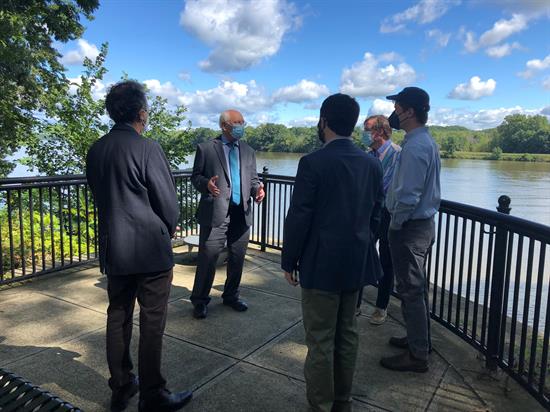- Home
- About
-
Constituent Services
- Academy Nominations
- Community Project Funding
- Congressional Art Competition
- Congressional App Challenge
- Congressional Commendation
- Event Invitation
- Grants
- Help with a Federal Agency
- Internships
- IRA Clean Energy Consumer Benefits
- Know Your Rights: Immigration
- Request a Meeting
- Request Surplus Books
- Presidential Greeting
- Visit Washington D.C.
- Issues & Legislation
- News
- 20th District
- Contact

Press Releases
Tonko’s NY-NJ Watershed Act Advances Out of CommitteeLegislation to restore & protect key waterway clears Natural Resources Committee
Washington,
February 16, 2022
WASHINGTON, DC—Congressman Paul D. Tonko today cheered the advance of H.R. 4677, the New York-New Jersey Watershed Protection Act out of the House Natural Resources Committee. This legislation, authored by Tonko, makes needed repairs, replaces outdated equipment, and improves resiliency for the Hudson River and the New York-New Jersey Channels. During today’s markup, the Congressman delivered remarks highlighting why this legislation is essential to driving economic growth and community development for the millions who reside near this critical waterway. See below Rep. Tonko’s remarks as prepared for delivery: This Watershed is an economic engine not just for our local communities, but for the nation. Federal investment is long overdue to ensure the Watershed can continue to fuel economic opportunity, tourism, and outdoor recreation, particularly in the face of increased flood risks and storm surges. My legislation will apply tested methods to right the wrongs from decades of disinvestment and target federal support to facilitate effective state and local action. Our Watershed is America’s most crowded, home to more than 15 million people, and millions more visit each year to support a multi-billion-dollar recreation and tourism industry. For too long, our water resources have faced extreme pressures from legacy pollutants and increased flood risks that threaten public health, ecosystems, and industries. In the last decade alone, New York counties in the Watershed filed more than 100 state and federal disaster declarations. In the Hudson Valley, sea level rise is expected to impact 9,000 acres of riverfront lands and more than 19,000 people this century. Other watersheds are already proactively addressing these public safety threats, avoiding more costly interventions in the future. The Delaware Restoration Program, for example, serves a population of less than half the size of the New York-New Jersey Watershed, and is putting a $26 million investment from the Bipartisan Infrastructure Law to work addressing critical community and ecosystem needs. Indeed, every other watershed that supports a population of our size has received significantly more federal funding. I am proud to have worked closely with a coalition of more than 50 community organizations, as well as state and local governments, to receive valuable input and design a program modeled on the Delaware Program, while making critical adjustments based on lessons learned. The resulting bipartisan legislation will establish a targeted role for the federal government in the implementation of a basin-wide strategy to coordinate local restoration projects that promote healthy ecosystems and improved coastal resilience, water quality, and public engagement. The program will pay significant dividends by leveraging private investment and allowing states and local communities to take action. In addition, the Chairman’s Amendment in the Nature of a Substitute makes important technical corrections to the legislation, including to ensure the program honors traditional communities and brings Tribal groups to the table throughout the consultation process. I am proud that the legislation is supported by 26 bipartisan Members from around the Watershed, more than 50 local organizations, and state and local governments. This broad support underlies the importance of a basin-wide restoration approach, these proven funding mechanisms, and the urgent need to prevent more costly interventions in the future. As they have throughout our nation’s history, the mighty waters of New York and New Jersey can be harnessed once again, not as sources of harm and pollution to local communities, but for enhanced public health, cherished gathering places, public outreach and education, and the celebration of a heritage that grounds us in our deep roots while propelling us into a cleaner and more just future. ### |
